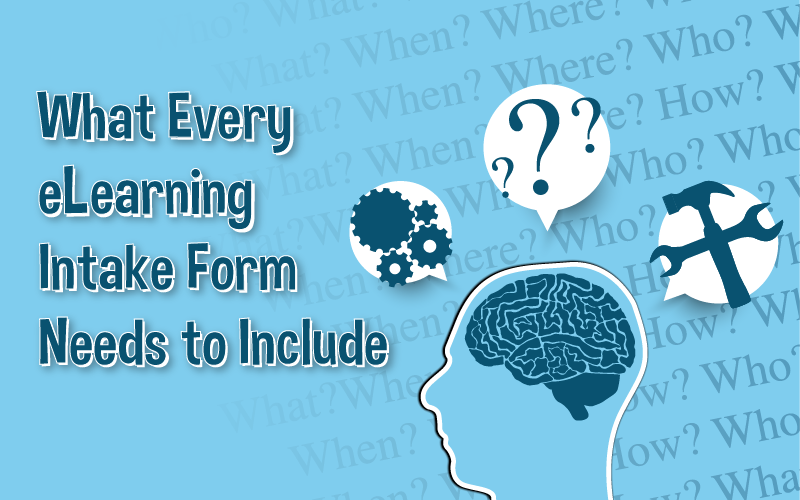 Liz Sheffield is a freelance writer with a background in training and development. She specializes in writing about everything related to the human side of business. You can contact her via LinkedIn or Twitter.
Liz Sheffield is a freelance writer with a background in training and development. She specializes in writing about everything related to the human side of business. You can contact her via LinkedIn or Twitter.
Developing eLearning can be a fun and creative process. But if you start your project without a clear idea of what the end result needs to be, you’ll find yourself, your client, and ultimately the learners, in a less-than-happy place. To avoid this unhappy fate, it’s important to establish the parameters of your eLearning project.
When you initially meet with clients, either virtually or in person, you need to walk away with the following information:
- Who are the learners?
- What do they need to learn (a.k.a., what are the learning objectives)?
- When will this be delivered?
- Where will it be delivered (via LMS, stand-alone link, or part of a larger program)?
- How will success be measured?
To avoid creating eLearning that doesn’t address your client’s desired behavior changes, or the information they want to convey, consider creating and using an intake form for all of your eLearning projects.
An intake form helps eLearning designers ask the right questions, capture and record responses, and establish an agreement with your clients about what success looks like.
Below are some questions that will help you gather the information you need so you can get started on the creative process with a clear, defined goal which is mutually agreed upon by you and the client.
Audience (who)
- How many people will complete this training?
- What are the job functions/levels of these learners?
- Have the learners completed eLearning before?
Learning Objectives (what)
- What is the business problem or you are trying to solve or new behaviors you want to see?
- What skills or knowledge do learners need to develop in order to address this problem?
- What barriers, if any, exist to prevent learners from effective performance in this area?
Timing (when)
- When will learners start to use this eLearning (i.e., what’s the deadline)?
- What, if anything, will learners need to do to get ready to complete this eLearning?
- Are there other events at that time which we should consider (e.g., are there other work events that will prevent learners from completing the eLearning)?
Delivery (where)
- Where will this be delivered to learners (via a website, LMS, or email link, etc.)?
- Are there system requirements or constraints we need to consider when developing this eLearning?
- Will the content need to be updated? If so, how often? Who will be responsible for updates?
End goal (how)
- What will successful performance look like after the training?
- How will success be measured?
As you ask clients these questions, you may realize that while the client believes there’s a training issue, there may actually be a performance issue. In that case, ask some follow-up questions to get at the root cause of this issue:
- Have the standards (or desired performance behaviors) been defined, documented, and communicated?
- Are the standards measurable?
- Are the desired behaviors being rewarded?
- Are inappropriate behaviors being addressed?
When there’s a tight timeline, some clients – and even some eLearning designers – may balk at taking extra time to talk through a set of intake questions.
Don’t give in! Yes, this process requires some additional time, but it also makes it possible for you to use your creative skills to deliver the right content at the right time.
And, in the end if you use an intake form, you’ll have a lot more fun knowing that your creative energy is headed in the right direction.


